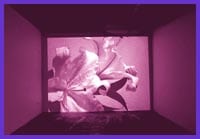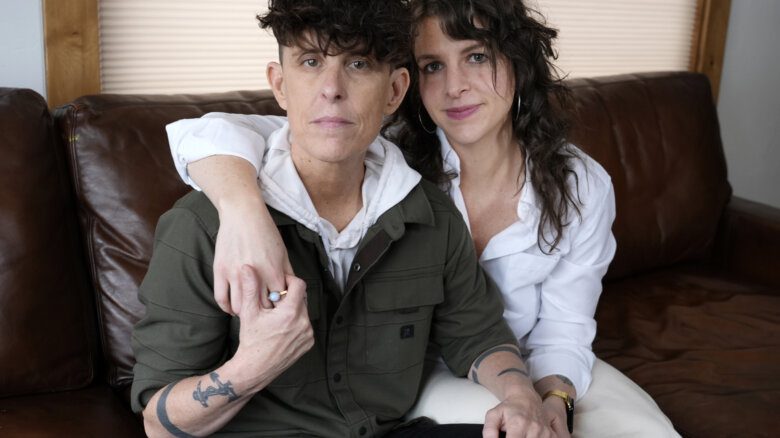At the Gendai Gallery in the Japanese Canadian Cultural Centre, five artists have created works that incorporate or draw on the centre’s archive of photographs, objects and ephemera.
The brainchild of author Kerri Sakamoto, and driven by Marilyn Jung and Aiko Suzuki, the resulting Recollection Project is a strong inaugural show by well established artists who all, in some way, found what they wanted in the hubris of a community archive.
Of all the pieces, Stephen Andrews’s Issei Day, October 1966 makes the most direct link to the archive. Anyone who knows Andrews’s work knows that portraits and crowds figure prominently. So when he came across an envelope of photo negatives taken in 1966 of a crowd of first generation Japanese Canadians at an Issei Day celebration in Toronto, he knew he’d hit gold.
This remarkable piece takes the shape of what looks like rows of film strips; individuals emerge from a slow pan across the crowd. The faces, clothing and gestures are re-animated, our memories jogged.
Andrews, whose mother and grandmother are Chinese, tells me he is the keeper of his own family’s histories. Perhaps this is why he and Kerri Sakamoto worked so hard to identify as many of the people in the photographs as they could; they get credit, along with the photographer, at the beginning of the sequence.
Montreal/Halifax artist Lani Maestro’s Taema (Japanese for pause or gap) revolves around the display of a blank book whose pages are each penetrated in the same place by a small round tear. A video monitor set into the wall shows the pages of the book being leafed through, the hole animating each page like images in a flipbook. The book itself sits open like an artifact in a museum-style vitrine set adjacent to the monitor.
The potentiality of the book – as an object to be read, used, touched – is silenced by its encasement yet livened by the video.
Nevertheless, this stillness allows us to ponder the enigma of the hole, or “gap” and wonder if what’s missing is what makes the object worth preserving.
Pachinko is a Japanese game of chance, something like pinball. Finding a box of pachinko balls in the archive inspired Toronto artist Germaine Koh to make a playful piece using small steel ball bearings.
Silver balls rain almost imperceptibly down from the ceiling onto the stark concrete floor, pooling in patterns of reflected light that make the floor look like an inverted map of the heavens.
Louise Noguchi and Sarindar Dhaliwal both, independently, decided that a 1955 photograph of a man, Otokichi Onishi, standing behind pots of unimaginably high chrysanthemums, would be their muse.
Like most of the artists in this show, Dhaliwal is not of Japanese descent; her roots are South Asian. On a trip to New Delhi five years ago, she took photographs at a flower show; overtop photo etchings of these flowers is a film loop of red abstracted forms which is meant to formally link the artist and Onishi across time and cultures.
Around a corner at the end of the long cavernous gallery space, out of sight but terribly audible, comes what sound like gunshots. When we finally see Louise Noguchi’s astounding installation, Crack, we learn the sound belongs to a bullwhip beheading long-stemmed flowers that look exactly like the ones Onishi stands behind. The large projected video is part of Noguchi’s current performance and video works based on wild west skills like roping and knife throwing.
Crack shows a slow ritualistic pan back and forth across the torso and lower face of the artist as she stands surrounded by big blue sky. Wearing a man’s kimono that billows in the wind, she holds out white lilies and chrysanthemums to the whip’s lash. With a crack, the flower’s head explodes.
The effect turns a rough-riding cowboy bravado into an iconoclast’s east-west meditation.
More than memory, the Recollection Project tell us how histories are never stagnant but are continually re-collected and recycled into new narratives.
The catalogue, with a text by Richard Fung, is forthcoming.
RECOLLECTION PROJECT.
Till Sat, Dec 2.
Gendai Gallery.
Japanese Canadian Cultural Centre.
6 Garamond Court, Don Mills.
(416) 441-2345.
Let There Be Light is Gendai Gallery’s fundraising silent art auction, held at 7pm on Sat, Nov 18; tickets are $100.

 Why you can trust Xtra
Why you can trust Xtra


